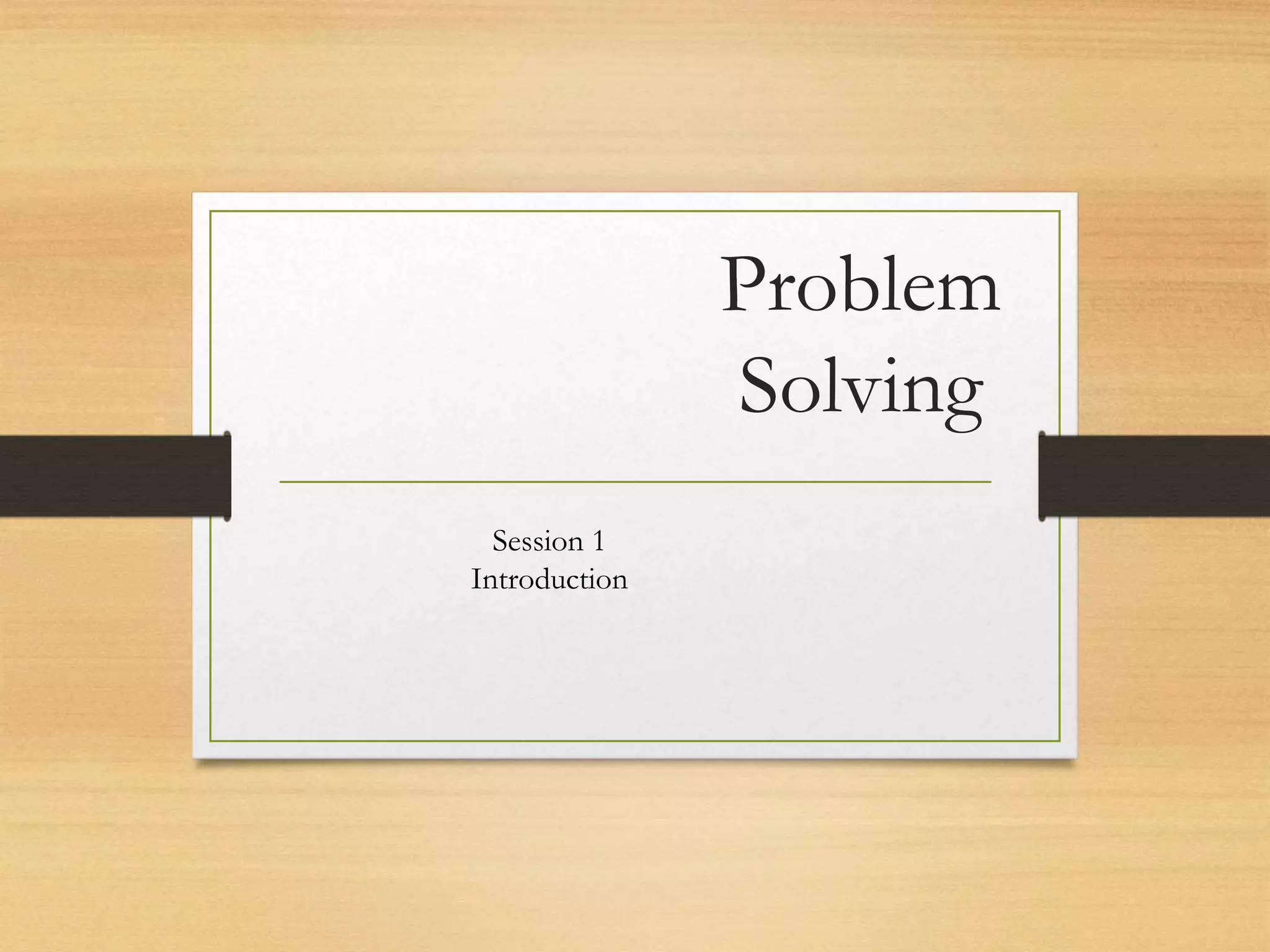This document outlines an introductory problem solving session, which will cover several topics: reviewing the module topics and expectations, completing paperwork, reviewing learning styles, and answering questions. The module will teach critical thinking and problem solving skills through activities and cover the six steps to problem solving. At the end, participants will receive a learner plan, certificate, and be asked to provide an evaluation. Follow-ups will occur at 3, 6, and 12 months.






























